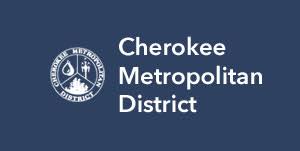ìMoody Mr. Marketî is off his meds again; and the stock, commodity and foreign exchange markets are once again in full manic-depressive episodes. November doesn’t look like it will be any calmer. European contagion, the Congressional Super Committee and increased tension between Occupy Wall Street protesters and their local police forces will keep ìMr. Marketî bouncing off the padded walls.So just like in 2008, we hear people talking about ìgoing to cash.î Or gold, silver or canned beans. But what does it mean to hold cash? Are there risks in that too?There are a number of federal government deposit insurance programs out there that may apply when someone holds cash in an institution. The most well-known is the FDIC ñ Federal Deposit Insurance Corp. The FDIC was created in 1934 as part of the now-repealed Glass-Steagall Act. It guarantees up to $250,000 of deposits per depositor per bank. They also set rules and inspect banks to ensure they are financially healthy enough to meet withdrawals. They can force banks to close if there is a risk of depositor losses, and they have helped arrange purchases by larger banks to protect deposits (Washington Mutual being a good example).The National Credit Union Share Insurance Fund (NCUSIF) provides the same $250,000 level of insurance on credit union accounts. And the Securities Investor Protection Corp. (SIPC) protects cash held in brokerage accounts. The SIPC also provides up to $500,000 in protection for securities held in brokerage accounts. A vitally important point is that the SIPC does not ever protect against market risk. It only protects the fact that you actually own the stock or mutual fund you purchased and placed into the account in your name in case the brokerage goes under. If that stock or mutual fund goes down in value per share, that’s on you.How are these insurance programs funded? They are, literally, insurance. So the member banks, credit unions and brokerages pay insurance premiums to their respective funds. These usually are between 0.25 ñ 1 percent of the insured deposits at the institution. The goal of the FDIC and the others is to keep an eye on the health of the banks and step in before there are actual losses on the deposits themselves. They can force changes in management or wipe out the owners’ stake. But in some cases the banks ìblow upî faster than the program can step in, so the insurance fund must pay out to make the depositors whole. There are currently more than 900 banks on the ìProblem Bank Listî that are undercapitalized and at risk of FDIC action. This is about 12 percent of all the banks in the U.S., and is the highest level in two decades.Despite the pleasant sounding text on the FDIC signs saying ìbacked by the full faith and credit of the United States,î there is actually no binding law saying Congress must refill the FDIC fund if it runs out. The law only says that the signs must have that phrase ñ they îforgotî to include a section detailing how to enforce the backing. The assumption is that Congress will be politically forced to bail out the FDIC (or NCUSIF or SIPC) once it becomes clear that something so basic as a guarantee on grandma’s checking account is in question. This was the same assumption that turned the implicit guarantee of Fannie Mae and Freddie Mac into explicit takeovers during the subprime mortgage crisis.The question up for debate is whether there is any more firepower in our federal debt levels to afford to back-stop the FDIC in the event of a number of quick Lehman/Bear Stearns-style large failures. Also in question is if this would be seen as another massive bailout that the Tea Party and Occupy Wall Street folks might be able to squash.Don’t panic just yet, though. The risk of enough banks collapsing all at once without other banks being able to buy them ñ at the same time as Congress not being able to bail out grandma’s checking account is, for now, relatively low. The risk of your individual bank closing next week and either reopening as part of a larger bank or with a notice to contact the FDIC to get your money is more realistic.How do you protect yourself against that possibility? Review the ìProblem Bank Listî online. Check out rankings such as Weiss Ratings and Bankrate. Consider those against your relationship with your institution to determine if you need to make a move. Make sure that you have enough physical cash on hand or in another account elsewhere (another bank/credit union, Paypal or your brokerage account) to meet a couple weeks’ worth of expenses in case your primary bank does close. Having your emergency fund at a different institution or in real cash is a good idea anyway to keep yourself from electronically transferring money over for discretionary spending. But given that it may take as much as a couple weeks to a month to go through the feds’ paperwork to get your regular account’s money back, it is an even better idea. And finally, if you are fortunate enough to have more than $250,000 in cash some place; please make sure you keep an eye on the insurance limits. Break up your accounts into multiple banks/credit unions if you need to.The most catastrophic risk of holding cash, however, is low interest rates compared to inflation. Regardless of how solid deposit insurance may or may not be, if you’re making 0.5 percent on your CD when inflation is 3.5 percent or much higher, then you’re still losing your deposit’s value anyway.Jason Gray owns GoalView Advisors, a Registered Investment Advisory firm in Falcon. He is a Falcon resident and serves as chairman of the board for the Eastern Plains Chamber of Commerce. He can be reached at 719-439-2054 or jason.gray@goalviewadvisors.com.







